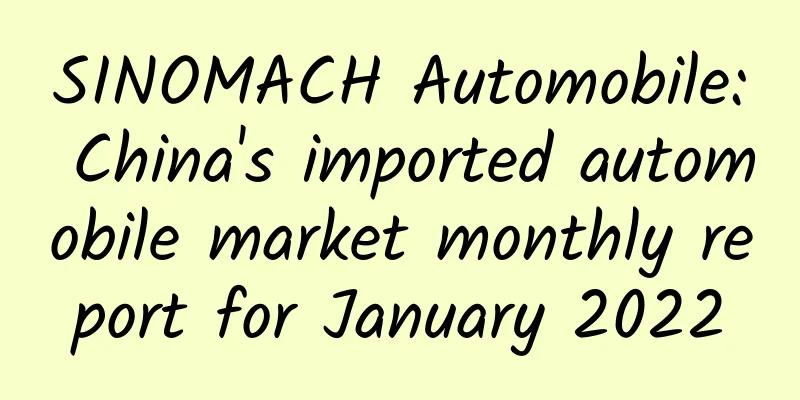SINOMACH Automobile: China's imported automobile market monthly report for January 2022

|
1. Supply 2. Demand As supply was less than demand in 2019-2020, the inventory depth of the entire imported automobile industry showed a significant decline. In 2021-2022, supply and demand were basically balanced, but sales declined and the inventory depth rebounded to 2.7 months. From a historical perspective, it is at a reasonably low level. The unit price of imported automobile customs declarations has increased year by year. From 2015 to 2022, the unit price of imported automobile customs declarations increased from 252,100 yuan to 396,600 yuan. One is the trend of consumption upgrading, and the other is the trend of localization of low-priced products. There is a clear trend of upgrading in imported car consumption. In January, the decline in luxury and super luxury brands was significantly lower than that of non-luxury brands. "Luxury" continued to rise, with luxury cars accounting for more than 90%. VI. Vehicle Structure 7. Displacement down 8. Sales of imported new energy vehicles fluctuate |
<<: Can customization help home appliance companies break out of the cold winter?
>>: Harvard University: 4-20% of women of childbearing age worldwide have polycystic ovary syndrome
Recommend
Is there really a need to panic about the wave of mobile phone OEM factory closures?
In the past two days, the technology circle has b...
Audi and SAIC finalize cooperation, launch first China-specific model next year, expected to lead BMW and Mercedes-Benz
If one word is used to describe the current Chine...
From an ignorant child to an independent otter, what does a little otter go through when growing up?
In the early morning of November 1, 2023, A group...
5 important updates of iOS 14.5: embodying "user sovereignty"
1. Block app tracking At its press conference on ...
The forerunner of Xiaomi's gaming console? Get a sneak peek at the Xiaomi controller
After making mobile phones, tablets, TVs, and box...
How to edit Tik Tok movies into short videos?
Recently, with the rapid development of short vid...
What’s the matter with Air China suspending meals on some flights? Why did Air China suspend meals on some flights?
China Southern Airlines has introduced regulation...
Video websites have entered the era of competition among fathers, but profitability is still the top problem
With Xiaomi's entry into iQiyi and Youku Tudo...
The Double 11 marketing of this e-commerce company is a little different from that of Tmall and JD.com
Since the rapid development of the Internet indus...
How to apply for a 400 telephone number? How to apply for a 400 number?
How to apply for a 400 telephone number? How to a...
The roasted lamb in Kashgar is so delicious!
Written by Wei Shuihua Header image | Food Photog...
Analysis of the account opening process of Douyin Feed
1. What is Feed Flow 1. What is a feed? Feed stre...
Online traffic generation skills for training institutions!
Education is the foundation of a country. Parents...
Teacher Peng Xinrong's "Xin Yi Shen Shu" time-space energy prediction online course
Teacher Peng Xinrong's "Xin Yi Shen Shu&...
Introduction to Xiaomi news resources and advertising formats
As more and more application markets begin to dev...









